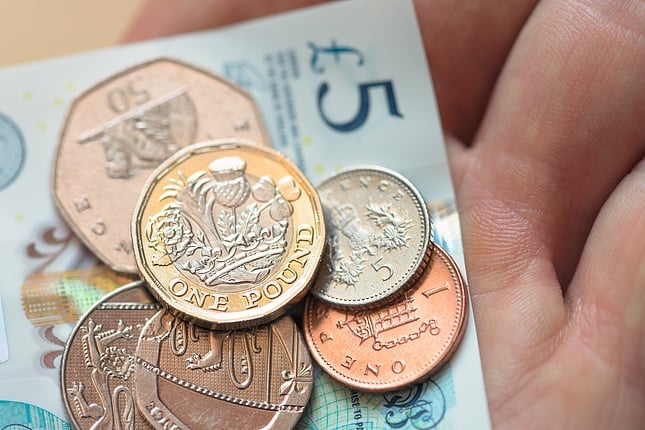The Bank of Canada (BoC) is set to announce its interest rate decision on Wednesday, July 13 at 14:00 GMT and as we get closer to the release time, here are the expectations as forecast by the economists and researchers of nine major banks, regarding the upcoming announcement.
The BoC is set to hike rates by 75 basis points (bps) – an extraordinary pace in normal times – to cool a heating economy.
TDS
“We look for the BoC to lift rates by 75 bps, bringing the overnight rate to 2.25%. Markets have almost fully priced the move, and a dovish surprise would raise questions about the Bank's commitment to its inflation target. The tone of the communiqué should be stridently hawkish given recent data on inflation and inflation expectations, despite expected downward revisions to the growth outlook.”
ING
“We expect the BoC to implement a 75 bps move. The economy is growing strongly, is at record employment levels and its inflation rate is running at 7.7%, the fastest rate since January 1983. The housing market is also red hot while Canada’s strong commodity-producing sectors mean it is far more resilient than most major economies to the spike in prices.”
RBC Economics
“We expect a 75 bps increase. That would be the largest single rise since the 1990s. May CPI growth at 7.7% (year-over-year) is running well above the bank’s April forecast of 5.8% in the second quarter. And 60% of the prices tracked by the measure are growing above the BoC’s 1% to 3% target range by our count. Worryingly, those higher price readings are beginning to seep into longer-run inflation expectations. An unhinging of longer-run inflation expectations from the BoC’s targets would disrupt decades of effective inflation-targeting monetary policy. It would also require much larger and more damaging interest rate hikes to reverse. Against that backdrop, we expect the economic growth risks from hiking rates too aggressively in the near-term will be overshadowed by the medium-term cost of not doing enough. The overnight rate remains too low at 1.5%. We expect the central bank to continue on a more aggressive hiking path with another 75 bps increase in September. We continue to believe inflation is close to its peak, but won’t shift to more sustainable levels until demand slows more significantly. Once that happens, expect the BoC and other central banks to again push rates lower – though this likely won’t play out until the economy undergoes a modest contraction next year.”
NBF
“We expect the BoC to increase its overnight target by 75 bps, noting that they will continue to ‘act forcefully’ to bring down inflation. That should mean an above-25 bps hike in September but expect the BoC to keep the ‘50 vs. 75’ debate up in the air and data dependent. Meanwhile, an updated MPR will show a much higher near-term inflation projection, though the growth outlook could be marked down. The decision will be followed by a Tiff Macklem and Carolyn Rogers press conference where the focus will surely be on how high the BoC believes it will have to hike.”
CIBC
“Rising inflation expectations seem likely to cement a 75 bps rate hike from the BoC, but that’s also because the resulting 2.25% overnight rate is unlikely to be too much for the economy to handle. Subsequent rate hikes will likely be smaller, as the risk of overdoing it becomes more material the higher rates climb. The Bank will reiterate its view that rates might have to exceed 3% (the top of the neutral range) to do the job, although we’ll retain our call for a 3% peak. Look for the Bank to downgrade its growth forecasts, effectively conceding that with higher price pressures than it expected, getting inflation back to target will require more of a sacrifice in the pace of output. But we also expect the report to dig into the inflation data to explain that much of this year’s inflation shock isn’t coming from excess demand in Canada, and therefore, how inflation might dissipate in the coming years without the need to drive the country into the deep recession that would be necessary if all of the spike was due to an economic overheating.”
BMO
“We fully expect a 75 bps rate hike, with the Fed’s like-sized move last month paving the way for others to become more aggressive. In fact, there is a reasonable case to be made for a 100 bps step – such a hike would take the overnight rate to 2.50%, immediately moving to the middle of the Bank’s range for neutral rates. It could also be justified by the wild inflation overshoot. However, we still lean 75 bps, as Bank officials have clearly stated that they want to be a source of stability and predictability.”
Wells Fargo
“With the BoC saying last month it is prepared to act more forcefully if needed, we believe that will result in a 75 bps policy rate increase to 2.25% at the July meeting. Market participants will also closely scrutinize the accompanying statement, and the central bank's updated economic projections, for hints on whether the BoC could continue hiking in 75 bps increments, or revert to a slower pace of tightening moving forward.”
Citibank
“A 75 bps rate hike in July is the most likely scenario, taking policy rates to 2.25% this week. Beyond this week, we expect 50 bps hikes from both the BoC and the Fed at their September meetings and for policy rates in Canada to reach 3.5% by year-end. Inflation forecasts in the BoC’s quarterly Monetary Policy Reports have been consistently revised up over the last year and are likely to be substantially higher again in July, closer to around 7-8% for the next few quarters and likely near 7% for the year. Growth forecasts will likely be revised lower, but with medium-term forecasts consistent with a ‘soft-landing’ scenario. Still, given recent market focus on recession risks, this is likely to be a key topic of questions at Governor Macklem’s press conference.”
Goldman Sachs
“We expect the BoC to act ‘more forcefully’ and hike the policy rate by 75 bps to 2.25%. Beyond this week, we expect another 75 bps hike in September, 50 bps hikes in October and December, and a 4.25% terminal rate reached in Q1 2023. The main drivers of our hawkish BoC call are that we expect headline CPI inflation to remain above 7% this year and for the BoC to respond aggressively to any signs of entrenched inflation. Risks to our hawkish terminal rate forecast are to the downside. A more significant US growth slowdown or a crash in the housing market would likely mean that the BoC hikes less in December and January than we expect.”
Information on these pages contains forward-looking statements that involve risks and uncertainties. Markets and instruments profiled on this page are for informational purposes only and should not in any way come across as a recommendation to buy or sell in these assets. You should do your own thorough research before making any investment decisions. FXStreet does not in any way guarantee that this information is free from mistakes, errors, or material misstatements. It also does not guarantee that this information is of a timely nature. Investing in Open Markets involves a great deal of risk, including the loss of all or a portion of your investment, as well as emotional distress. All risks, losses and costs associated with investing, including total loss of principal, are your responsibility. The views and opinions expressed in this article are those of the authors and do not necessarily reflect the official policy or position of FXStreet nor its advertisers. The author will not be held responsible for information that is found at the end of links posted on this page.
If not otherwise explicitly mentioned in the body of the article, at the time of writing, the author has no position in any stock mentioned in this article and no business relationship with any company mentioned. The author has not received compensation for writing this article, other than from FXStreet.
FXStreet and the author do not provide personalized recommendations. The author makes no representations as to the accuracy, completeness, or suitability of this information. FXStreet and the author will not be liable for any errors, omissions or any losses, injuries or damages arising from this information and its display or use. Errors and omissions excepted.
The author and FXStreet are not registered investment advisors and nothing in this article is intended to be investment advice.
Recommended content
Editors’ Picks

EUR/USD holds on to intraday gains after upbeat US data
EUR/USD remains in positive ground on Friday, as profit-taking hit the US Dollar ahead of the weekend. Still, Powell's hawkish shift and upbeat United States data keeps the Greenback on the bullish path.

GBP/USD pressured near weekly lows
GBP/USD failed to retain UK data-inspired gains and trades near its weekly low of 1.2629 heading into the weekend. The US Dollar resumes its advance after correcting extreme overbought conditions against major rivals.

Gold stabilizes after bouncing off 100-day moving average
Gold trades little changed on Friday, holding steady in the $2,560s after making a slight recovery from the two-month lows reached on the previous day. A stronger US Dollar continues to put pressure on Gold since it is mainly priced and traded in the US currency.

Bitcoin to 100k or pullback to 78k?
Bitcoin and Ethereum showed a modest recovery on Friday following Thursday's downturn, yet momentum indicators suggest continuing the decline as signs of bull exhaustion emerge. Ripple is approaching a key resistance level, with a potential rejection likely leading to a decline ahead.

Week ahead: Preliminary November PMIs to catch the market’s attention
With the dust from the US elections slowly settling down, the week is about to reach its end and we have a look at what next week’s calendar has in store for the markets. On the monetary front, a number of policymakers from various central banks are scheduled to speak.

Best Forex Brokers with Low Spreads
VERIFIED Low spreads are crucial for reducing trading costs. Explore top Forex brokers offering competitive spreads and high leverage. Compare options for EUR/USD, GBP/USD, USD/JPY, and Gold.